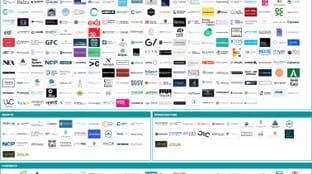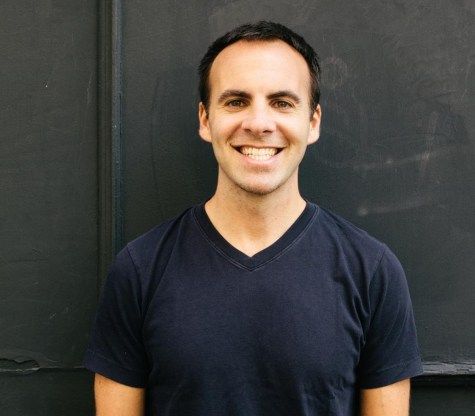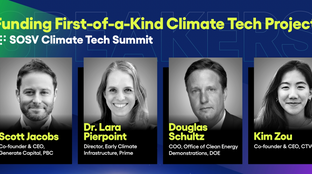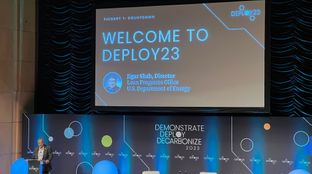
🌏 Who are the Climate Tech Investors?
A new interactive Climate Capital Stack Map
This week we chatted with Craig Shapiro of Collaborative Fund about his journey into venture and focus on climate.

This week we chatted with Craig Shapiro of Collaborative Fund about his journey into venture and focus on climate. Collaborative Fund was started in 2010 to invest at the intersection of for-profit and for-good and thematically seeks to fund founders in climate, money, food & agriculture, kids, and health. Their climate investments include Dandelion Energy, Impossible Foods, Quaise Energy, Modern Meadow, and Zitara, among others.
How did you first get started in venture capital?
I graduated college in 1999 as the internet was really coming alive. It was the go-go years for the dotcom boom, so I moved out to San Francisco to join some friends working on web and mobile development. That business was acquired in early 2006.
Around that time I started investing. At first it was small angel investments as a means to learn and expand my network. The angel ecosystem was so different from today where early stage investing is so robust with a flood of early stage VCs. For a few years I invested while working with several businesses including GOOD Magazine, a fledgling media company focused on social impact.
Those interests of angel investing and social impact converged, and I decided to launch a fund a little over a decade ago. With the encouragement and support from a few mentors, I raised some money, invested my own capital, and started Collaborative Fund.
What is Collaborative Fund’s investment thesis and mission?
We aspire to be the leading source of capital for entrepreneurs pushing the world forward. That’s kind of our true north and born out of something that’s personal to me. There are others in the impact investing space, from folks like Capricorn with Jeff Skoll, Kapor Capital, and the Omidyar network, but none spoke directly to my interests, so I sought to create a new flavor with fresh ingredients.
I took a step back and asked myself, what’s the best way to catalyze change? Money. But I felt like the world was bifurcated into two big pools: the nonprofits like Red Cross, and the for profits like Coca Cola – with capital sources only aligned to one side. The Red Cross exists solely to help people while Coca Cola exists to generate investor returns, so it’s very black and white. I felt like the world was evolving to somewhere between these two; a good example is Kiva which operates a peer-to-peer lending platform that’s a nonprofit but runs like a for profit business. Whereas Howard Schultz of Starbucks was talking about the brand’s role in the community and other things you might associate with nonprofits. But the capital markets hadn’t evolved in parallel – foundations and private equity sat on opposing sides of the spectrum. So I thought there was a big opportunity at the intersection of those two.
Collaborative has made a lot of investments in consumer startups. How does this tie to your investment thesis around impact?
Our business model focus has shifted over time as Collaborative has gotten bigger, but consumer has always been at our core because consumer behavior is what’s really driving a lot of the impact in ESG investing, especially given how information access has proliferated.
The biggest difference for our generation is our unlimited access to information. Before, it was a lot easier to drink Coke when you didn’t know what was in it (and how it impacted your health)! Access to information is fundamentally changing consumer spending. That’s part of the core of Collaborative’s investment thesis – consumer awareness about how things are sourced, the impact on the community, on the environment and on their health drives spending behavior and is reshaping our economy. We do invest in companies selling to enterprises or institutions but we always have the end consumer in mind.
You’ve spoken elsewhere about “Villain Test” – mind explaining?
I have to give credit to the founder of GOOD Magazine, Ben Goldhirsh, who’s a very close friend of mine. The Villain Test is a very provocative way of calling out human nature for being self interested. Humans are hardwired to make decisions based, in part, on their own self interest – if you ignore that fact, it’s difficult to generate returns.
Here’s the question framework I use when looking at a new business: If this business goes on to be massively successful, will it improve people’s lives? If yes, would a villain buy the product? If you can positively answer both of those questions then you’re on to a massive addressable market, fueled by the desire to satisfy both the broader interest and our self interest.
Let’s use cars as an example. The devil on your shoulder wants the Ferrari – it’s fast, bold, and sexy. The angel on your other shoulder wants the Toyota Prius – it saves gas and is better for the environment. So consumers vacillate between sacrificing speed and sexiness to feel like they’re doing good, and few are satisfied with that sacrifice. Of course, we then saw Tesla unlock massive returns by satisfying both the angel and the devil’s needs. An electric-powered Tesla doesn’t ask you to sacrifice design or speed, and it’s got all of the sexiness of the Ferrari with all of the positivity of the Prius.
Another example is lighting. For many years we’ve had incandescent lighting which creates this attractive hue. But innovation created LED lighting which is so much better for the environment and lasts longer. So you watch people go into Home Depot, they go to the lighting aisle, and you see the Villain Test play out in real time. They’re looking at the LED lighting knowing that it’s better for the environment but kind of embarrassingly grab the incandescent lightbulb instead. Until somebody creates a lightbulb that’s as warm and attractive as incandescents, there’s not going to be a lightbulb that passes the Villain Test.
Why is Collaborative Fund investing in climate tech? Why do you find this an interesting space?
Not to overdo it, but I think climate tech passes the Villain Test. A lot of people talk about how the next trillion dollar opportunity will be in climate tech. As a species we need to solve for this, and in the process of doing so there’s going to be opportunity to generate great returns.
We at Collaborative are also a bit contrarian in that we look for fringe areas to invest. In a sense we are a startup ourselves, so we’ve got the underdog hustle to be opportunistic. I think back to when we first started investing in food, which was an area that most traditional VCs wouldn’t touch, and made a big bet on Beyond Meat. Today, there’s a similar opportunity in climate tech partially because the Cleantech 1.0 bust has caused a lot of firms to take a wait and see approach. We’re also really fortunate to have backers, including people like Nicholas Negroponte, Chris Cerf, Chuck Templeton, Ron Gonen, and others, who have given us the flexibility to take these risks and invest on a longer time horizon. It gives us a bit more rope than some of our peer group who are a bit more nervous and probably for good reason.
Collaborative Fund has invested early in deeptech companies in batteries (Zitara), geothermal (Quaise Energy), and nuclear (Radiant). How do you get comfortable with the high capital and technical risk vs return?
So much of investing as a venture capitalist is dictated by who you’re investing on behalf of (ie. your limited partners). We’re so grateful to have LPs that give us the flexibility to experiment. Candidly, we’re not fully qualified to diligence some of those deeptech companies. I don’t have a PhD in deep drilling, so when looking at Quaise, for example, we teamed up with The Engine to get comfortable with their technical diligence. But in general, when investing at the early stage, we want to get comfortable in underwriting the founder and their aspiration more so than the specifics of the underlying technology.
What are some verticals within climate tech that you find most interesting? What’s your framework for exploring this space?
For me, food was kind of a gateway drug into climate investing. It’s something that’s personal and we all do multiple times a day, which made it a more digestible investment area (if you will). After, everything else seemed to fall like dominoes. Questioning started to send me deeper into food and agriculture, so it wasn’t just Beyond Meat or Impossible Foods anymore, but rather the whole agricultural supply chain from what tools farms use, to the actual soil, which led us to our investment in Kula Bio.
Climate tech investing today reminds me of early stage investing circa 2010 back when I started Collaborative: the collaborative nature of a small, mission-driven ecosystem. Traditional software investing right now is so competitive, there’s so much money flowing in that firms are elbowing each other out of deals. It’s the opposite in climate. In almost every single climate deal we look at, other funds are actively looking to co-invest. They’re like, let’s call our friends at Prime Impact or The Engine or Breakthrough if it’s really risky. Because it’s more collaborative, firms can start to rely on the strengths and weaknesses of the syndicate. So, if The Engine has somebody on their team with a PhD in this area we can work with them to get more comfortable with the more technical questions.
What strengths does Collaborative bring to climate syndicates?
One is patient capital; the bulk of our capital comes from folks that recognize that we’re backing companies which aren’t looking to flip quickly, but are building solutions to really big problems. And sometimes that takes many years. There’s an emerging class of investment firms that are attacking problems within the climate space but aren’t great pools of supportive capital given the traditional 10 year fund lifecycle. Collaborative brings more flexibility on timing, which sounds like a small thing, but is actually really significant to the founder.
Another strength is our network. We’re fortunate to have a portfolio of companies that are working on interesting problems. When we were diligencing Quaise, I reached out to the founder of Dandelion, and she was able to share her perspective coming from Google X as well as connect me to others with expertise. Patience, flexibility, along with access to like-minded entrepreneurs are what we bring to the table.
I joke that if Collaborative threw a party and we invited our investors and portfolio companies, we would have a higher likelihood of people meeting their future partner or spouse than any other venture fund, since we’re backing such a like-minded group of people. We haven’t thrown a party, and I have no evidence to back that up, but I speculate that would be true – and fun!
Climate tech investing is growing 5x faster than venture as a whole. What needs to be true for generalist investors to gain more confidence investing in this space?
I hate to sound transactional, but I think so much is based on returns. The run up of Tesla’s stock really matters. It’s certainly caught the attention of a whole bunch of generalist funds – just look at the EV craze. It’s like how Beyond Meat’s IPO unlocked a rush into plant based food, and investors are like, well, we’ll take a look at that plant based chicken. Really, really powerful companies unlock more capital from generalist funds, but domain-focused funds are going to need to lead the way.
I really do hope that the floodgates open. But it’s a double edged sword as more generalist money flows into the ecosystem inherently it will create some problems like overfunding which will have blowback. We need to set expectations so that the haters are moderated from claiming that Cleantech 2.0 is just as bad as Cleantech 1.0. But overall I think that it’s a very positive trend, and I really think that now is the time – so count me in to the corner of people who are committed to it.
Are LPs setting guidelines around impact measurement or reporting?
I think of this evolution in phases. The first phase was the divestment stage where investors set guidelines around what we should not be investing in. That was a much easier conversation. The second phase, where we’re at right now, is fact finding. Everyone wants help getting smarter around industries and materiality. The future third phase will be clear guidelines around reporting and defining where we want to invest – but the industry is a ways off from that.
As a firm, we’re asking ourselves what we’re trying to quantify? A helpful guidepost could be to set a standard like measuring sticks from other industries like Fair Trade, LEED, B Corp. Otherwise, you get into a challenge where the word ‘good’ means different things to different people.
Interested in more content like this? Subscribe to our weekly newsletter on Climate Tech below!

A new interactive Climate Capital Stack Map

Financing around first- or early-of-a-kind project risk

‘Government-enabled, private sector-led’ in action in Washington, DC